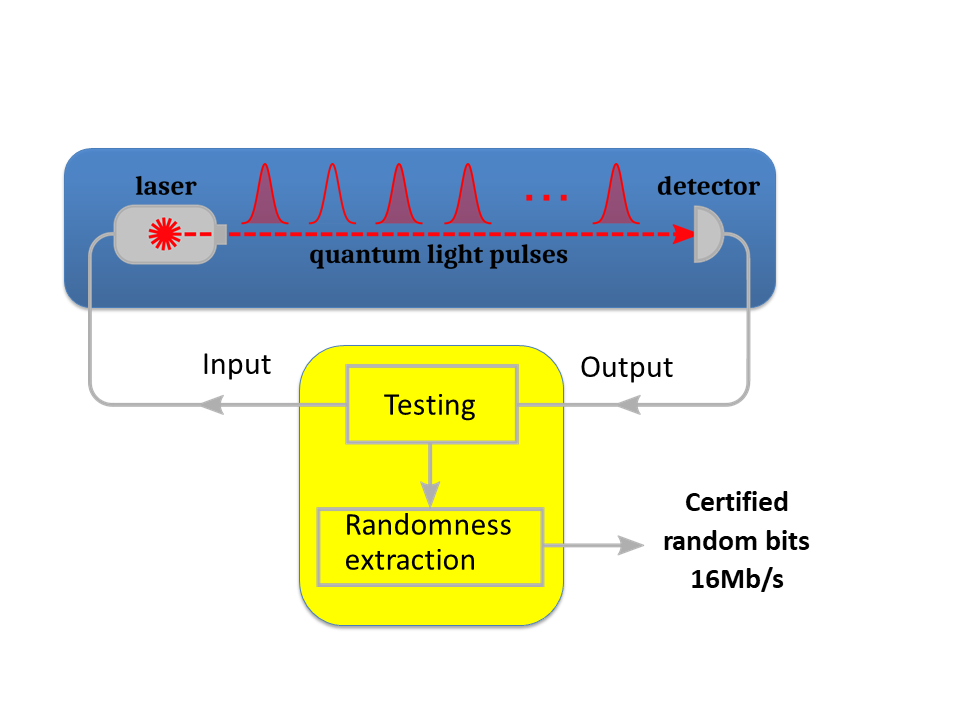The generation of random numbers plays a crucial role in many applications in science and technology, in particular for simulation and cryptography. It is of fundamental importance that the generated numbers are truly random, as any deviation may jeopardize security. Notably, recent breaches of cryptographic protocols have exploited weaknesses in the random number generation. In this context, schemes exploiting the inherent randomness of quantum physics have been extensively investigated. Quantum random number generation (QRNG) devices are now commercially available, which arguably represents one of the most successful developments of quantum technologies so far.
Despite this success, recent developments have pinpointed a general weakness and limitation of standard QRNG devices (including all commercial ones). Specifically, these devices fail to provide an accurate estimate of the entropy (i.e. quantifying how much randomness is generated in the quantum process). This has been recognized as a crucial issue for QRNG, since a poor entropy estimate may open security breaches. In practice it is usually challenging to accurately estimate entropy, since the implementation of any QRNG device is prone to unavoidable technical imperfections that lead to noise. How can one differentiate this noise from true quantum randomness? Even more importantly, the performance of a QRNG device may degrade over time. If the device malfunctions (or even breaks), low quality randomness (or even no randomness at all) may be generated without the user being aware of it.
Recently, we have proposed a promising solution for addressing the above problems, by developing a “self-testing” QRNG scheme. Here, the user can operate the QRNG device while simultaneously testing it, and thus certify the continuous generation of truly random numbers. Specifically, the generator can quantify the amount of quantum entropy generated by the system in real time, and unambiguously separate it from technical noise. This scheme combines strong security and ease of implementation, as we demonstrated in a proof-of-principle experiment, achieving randomness generation rates comparable to commercial QRNGs (~10 MHz). The main objective of the present project is to develop a demonstrator for self-testing QRNG. This demonstrator should be compact, simple to use, and achieve high rates. Importantly it should comprise only standard optical and electronic components, in order to ensure low cost. In turn, the demonstrator will place us in an ideal position for approaching industrial partners, and thus to potentially launch the commercial development of self-testing QRNG. On the scientific level, the project will bridge the gap between abstract device-independent quantum information processing and commercial quantum technology.
